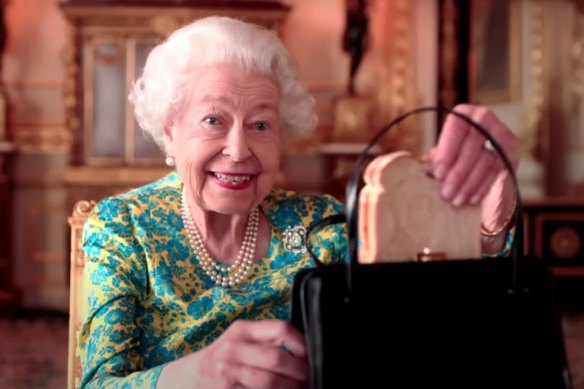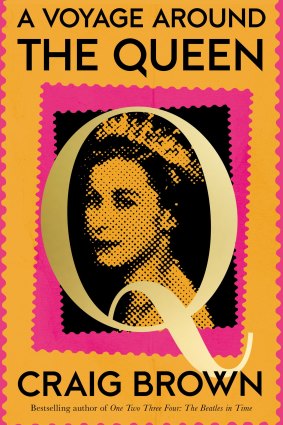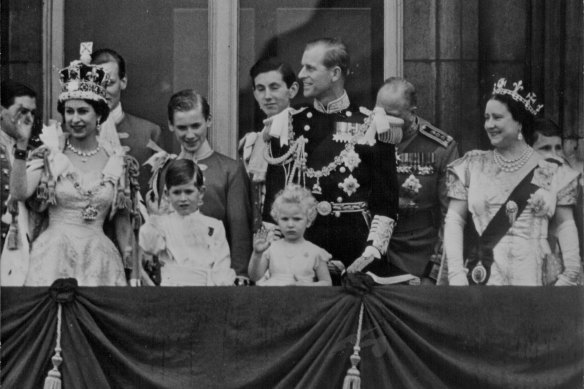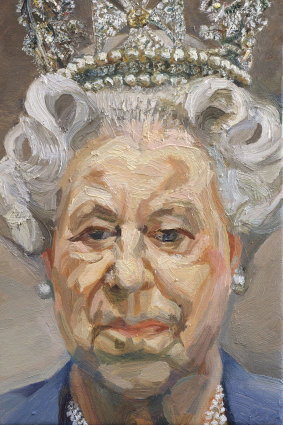A new look at the Queen gives us the myths, anecdotes and comedy
By Peter Craven
BIOGRAPHY
A Voyage Around the Queen
Craig Brown
Fourth Estate, $37.99
Craig Brown’s A Voyage Around the Queen is a marvellous book. It makes for a weirdly enchanting sense of the late Elizabeth II without diminishing the sense of how much she was bound by convention, how much the world was circumscribed by the polite question, and how much she was capable of reducing to a quivering heap the most self-possessed people. The British novelist Kingsley Amis, for example, was worried he’d fart in her presence.

The Queen was praised for her Platinum Jubilee skit with Paddington Bear, which included her revealing where she kept an emergency marmalade sandwich.Credit:
While Brown’s title recalls John Mortimer’s play about his father, his epigraph comes from the great Viennese modernist, Robert Musil: “One does what one is; one becomes what one does?” It means that Brown has given us a portrait of the Queen via the stories we have about her.
Brown is known for his satirical work in Private Eye magazine, but his most recent books are two acclaimed biographies: Ma’am Darling: 99 Glimpses of Princess Margaret, and One, Two, Three, Four: The Beatles in Time, both written in his now familiar short chapters through which the voyage results in a fully convincing portrait. He must have read a vast number of books and sources about the Queen and quotes from them with abandon.

Brown’s research included a vast number of books. Credit:
On the coronation in June 1953 we have: “On the Coronation Day of William the Conqueror, senseless Saxon folk gathered round Westminster Abbey to cheer their Norman king as he walked down the aisle. The Normans thinking this was an insult turned upon the Saxons killing nearly all of them. But on the Coronation of our lovely young queen, Queen Elizabeth II, no rioting nor killing will take place because present day royalty rule with affection rather than force.” So wrote Paul McCartney, aged 10 years, 10 months.
And here is the celebrated photographer Cecil Beaton who “sets off for the Abbey amid heavy sheets of rain, having filled his top hat with sandwiches, Indian ink and bits and pieces for his sketches”.
In her way, the Queen got around culturally. After two hours and 10 minutes watching Visconti’s Death in Venice, “the Queen flashes a bright smile, and says: ‘Well, that was a bit gloomy, wasn’t it?’“
When Marilyn Monroe met her, the Queen was the only woman on Earth more famous than she was. “[She’s] very sweet,” the Queen commented. “But I felt sorry for her, because she was so nervous that she had licked all her lipstick off.”
And Brown gives a sublime description of John F. Kennedy’s meeting with the then Princess Elizabeth in 1938: “Thursday night … am going to Court in my new silk breeches, which are cut to my crotch tightly and in which I look mighty attractive.”
The Queen hardly ever put a foot wrong, though her obsession with horses made her unfair to one of her trainers, Dick Hern, whom she sacked despite his heart attack, thus “turning … the racing world into republicans … Even the most thorough Royal biographers tend to glide over the episode or to ignore it entirely”. But horses are the common interest that allowed her to chat with Lucian Freud when he did her portrait.

The newly crowned Elizabeth II (left) waves from the balcony of Buckinghham Palace in June 1953.Credit: Paul Popper
Brown’s is a consistently amazing book. Who would have thought that Allen Ginsberg would have lobbied for the Scottish singer-songwriter Donovan to be made poet laureate, but what a bright idea. Or that to Ted Hughes, who did become poet laureate, the Queen “was a complete surprise … She was tiny … She had a very lively expression, & spoke so openly and friendly, that I immediately got the idea that she liked me as much as I liked her.”
A fair way through, Brown gives us two brilliantly juxtaposed longer sections. In the first, Brown at the age of 20 meets the Queen and bashes her ears relentlessly about theatre.

The Queen and Lucian Freud discussed horses while he painted her portrait.Credit: Royal collection
“After all, I had to tell Her Majesty about The Resistible Rise of Arturo Ui and the various dramatic innovations (‘Really? Goodness!’) introduced by Brecht. Though I barely knew what I was talking about, and have now forgotten what little I knew, I now think it’s possible that, in a funny sort of way, the shadow of Brecht and his theory of alienation was being mirrored in our conversation, if you could call it a conversation … She was both a person and a symbol, a total stranger yet wholly familiar. And there she was in front of me, expressing an interest (‘Yes, I see, hmm, fascinating’) in everything I said. Who knows?”
Brown places this next to consideration of the essay paediatrician and psychoanalyst Donald Winnicott wrote about the monarchy. “Winnicott built his considerable reputation on the idea of the ‘transitional object’: an item such as a blanket or a teddy bear which stands in for the mother … As children grow to adulthood, they abandon their blankets and teddy bears, and replace them with more sophisticated transitional objects from the realms of science, religion and culture … The monarch was, he thought, just such a transitional object.”
This is profound stuff and it sits very suggestively with the charming description of the young Brown and the Queen performing her dance like an act of kindness.
The Queen described herself as an actress confined to one role but the account of her agreeing to Danny Boyle’s idea of having her parachute out of a helicopter at the London Olympics is done so plausibly that you almost think it’s for real. You can see why William and Harry called out “Go, Granny.”
She did get the line she wanted: “Good Evening, Mr Bond.” Ten years later she got more lines in her 70th jubilee skit with Paddington, which drew praise from the likes of Judi Dench for her comic timing.
This is a wise and brilliant book that will surprise large numbers of people with its realism and its emotional reality and its restraint. We learn a thousand facts, but it’s as if the debunking spirit of Private Eye has uncannily been suborned into giving the human lineaments behind a face that is both a myth and a transcendence of myth.
The Booklist is a weekly newsletter for book lovers from books editor Jason Steger. Get it delivered every Friday.
Most Viewed in Culture
>read more at © Sydney Morning Herald